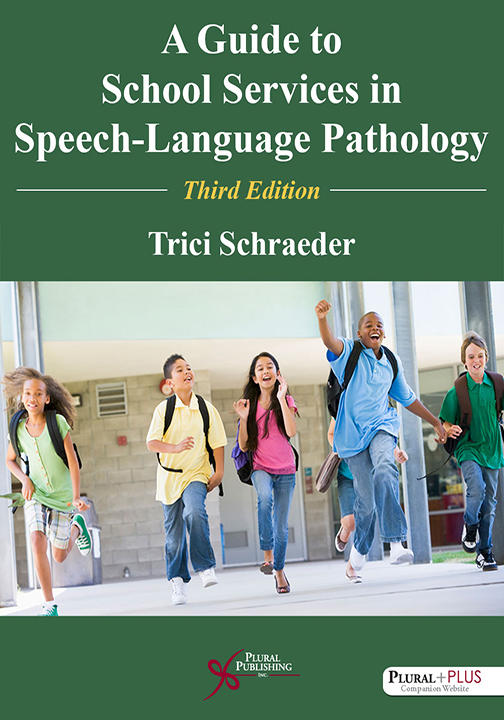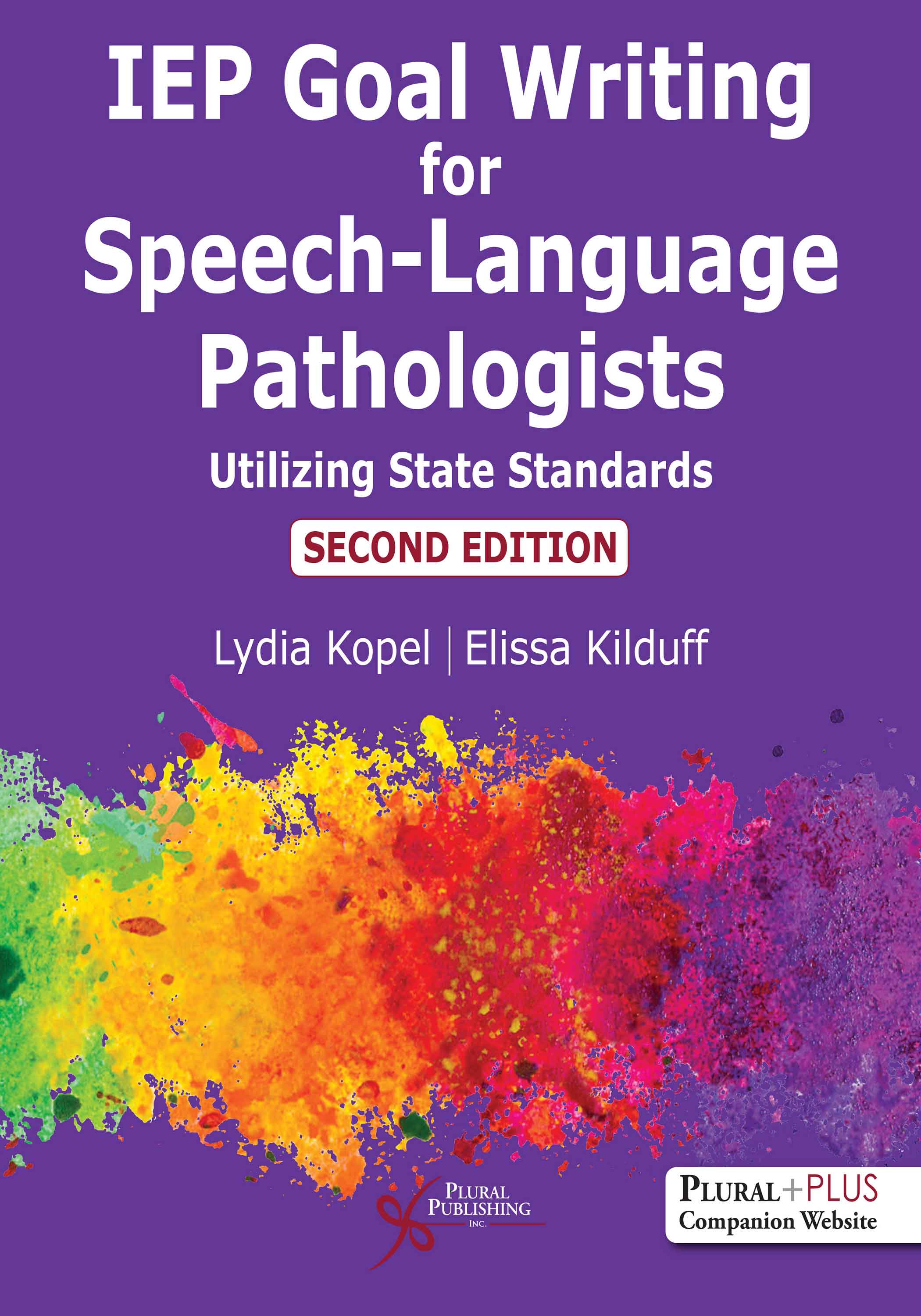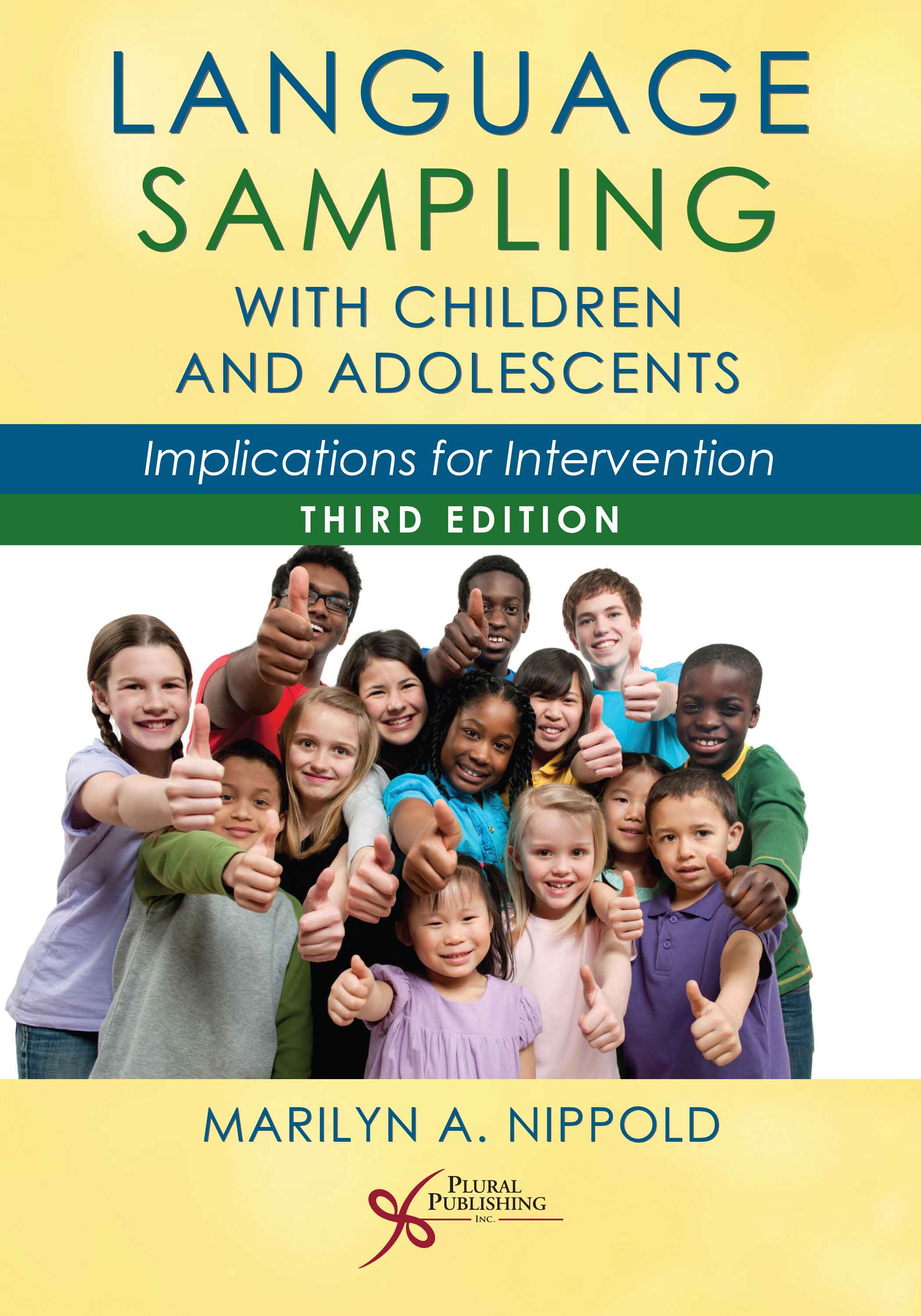
A Guide to School Services in Speech-Language Pathology..
Third Edition
Trici Schraeder
Details: 312 pages, B&W, Softcover, 8.5" x 11"
ISBN13: 978-1-59756-961-3
© 2017 | Available
A newer edition is here.
A Guide to School Services in Speech-Language Pathology, Third Edition serves as an introductory overview for the college student who is ready to embark on his or her school-based student teaching experience and thus is ideal for instructors of methods courses preparing practicum students for school-based experiences. Not only is it an excellent text for novices to the field, but it is also a very useful resource for the practicing, school-based speech-language pathologist.
Beginning with history related to school-based speech-language pathology services -- including a discussion of legal mandates (e.g., the Individuals with Disabilities Education Improvement Act, No Child Left Behind Act, Every Student Succeeds Act, and the Americans with Disabilities Act) -- the text then delves into a description of service delivery models; an introduction to the concept of a workload analysis approach to caseload standards in schools and example implementation strategies; a display of concrete, real-life success stories; and an offering of strategies for using evidence-based practice, proactive behavior management, conflict resolution, professional collaboration, conferencing and counseling skills, cultural competencies, goal writing, informal assessment procedures, and creating testing accommodations. A new chapter provides the evidence base for links between language, literacy, and the achievement of school standards. This chapter is a must-read for every school speech-language pathologist.
Real-life scenarios based on experiences shared by public school speech-language pathologists give the reader concrete examples upon which to scaffold the complex professional concepts. Chapter summaries provide an overview of the major points presented. Questions at the end of each chapter are designed to engage the reader in analysis and comprehension of material, and vocabulary related to each chapter is conveniently defined at the start of each chapter so that the reader can better grasp the subject matter within.
New to the Third Edition
- A chapter on linking language, literacy, and the Common Core State Standards
- Pertinent information about the Every Student Succeeds Act of 2015
- The addition of four online resources
- The addition of 10 new evidence-based practices
- More than 130 new references
- An updated appendix of free Apps
- A PluralPlus companion website that includes the Oral Language Curriculum Standards Inventory -- grade-by-grade expressive language checklists that align to grade-by-grade oral language curriculum standards
List of Tables and Figures
Preface
Acknowledgments
Chapter 1. Origins of Public School Speech-Language Pathology Programs
Related Vocabulary
Introduction
The Quiet Revolution
Movement Toward Inclusion
No Child Left Behind Act
Every Student Succeeds Act of 2015
Individuals with Disabilities Education Improvement Act
Successes and Failures
Roles and Responsibilities of Today's School-Based Speech-Language Pathologist
Requisite Knowledge for the School-Based Speech-Language Pathologist
Essential Skills for the School-Based Speech-Language Pathologist
Dispositions Toward Persons with Disabilities: Considerations in Practice for the
School-Based Speech-Language Pathologist
Summary
Questions for Application and Review
References
Chapter 2. A Workload Analysis Approach to Caseload Standards in Schools
Related Vocabulary
Introduction
Caseload and Service Quality: Specific Effects
What Is Caseload?
What Is Workload?
Considerations Regarding Options for Unmet Needs
Twelve Steps to a Workload Analysis
Some Workload Solutions
Success Story: A Workload Analysis Approach Applied to a Weighting System
Summary
Questions for Application and Review
References
Appendix 2-1. Middleton/Cross Plains Area School District Speech-Language
Severity Rating Scales
Chapter 3. Assessment, Evaluation, and Individualized Education Programs in Schools
Related Vocabulary
Introduction
Prereferral
Referral for Evaluation for Special Education and Related Services
The Individualized Education Program Team
Assessment Activities
Evaluation Process
Evaluation Report
Re-evaluation: General Provisions
The Individualized Education Program
A Historical Prospective: Ongoing Evolution of Individualized Education Programs Summary
Questions for Application and Review
References
Appendix 3-1. Example IEPs
Appendix 3-2. Applying the IEP Team Decision-Making Flow Chart to a Case Study
Appendix 3-3. Discussion of Sarah's IEP and Alignment to Common Core State Standards
Chapter 4. Speech-Language Service Delivery Formats Used in Public Schools: Intervention Approaches
Related Vocabulary
Introduction
Selecting Program Formats
Self-Contained Program Model
Resource Room Model
Consultation Model
Team Teaching Model
Prevention Model
Cooperative Learning Team Model
Teaming for Reading Model
Pull-Out Program Model
Computer-Assisted Learning Model
Telepractice Model
Video Modeling
Multimodal Communication Model
Teaming with English Language Learning (ELL) Programs
Selecting the Intervention Approach
Summary
Questions for Application and Review
References
Chapter 5. Evidence-Based Practice
Related Vocabulary
Introduction
"Credible Evidence" and "Scientifically Based": What Do These Terms Mean?
Criteria for Evaluating the Quality of the Reasoning
Ranking the Quality of the Evidence
ASHA Initiative
ASHA Framework for Assessing Levels of Evidence
"Evidence Based" Is More Than Literature Reviews
When Is It Advantageous to Examine Levels of Evidence?
Challenges
State of the Art
Specific Evidence of What Works in Speech-Language Intervention
Summary
Questions for Application and Review
References
Appendix 5-1. Useful Web-Based Resources
Chapter 6. Problem Behavior Management and Conflict Resolution
Related Vocabulary
Introduction
Prior, Proper Planning, and Proactive Strategies
Creating a Culture of Community
The Adverse Affects of Bullying on School Community and School Climate
Approaches to Discipline and How to Impact School Culture
Effective Conflict Resolution to Use with Adults
Summary
Questions for Application and Review
References
Chapter 7. Cultural Competence in Communication
Related Vocabulary
Introduction
Interview and Case History
Assessment Tools
Approaches to Assessment
Cultural Considerations Related to Intervention
Cultural Competence Related to Curriculum Content and Intervention
Summary
Questions for Application and Review
References
Chapter 8. Conferencing, Counseling, and Creating a Sense of Community
Related Vocabulary
Introduction
Creating a Positive First Contact
Tips and Techniques for Parent-Teacher Conferences and Individualized Education Program Meetings
Student Records and Confidentiality
Tips and Techniques for Personal Adjustment Counseling
Summary
Questions for Application and Review
References
Chapter 9. Oral Language Curriculum Standards Inventory (OL-CSI): An Authentic Assessment Approach for School-Based Speech-Language Pathologists
Related Vocabulary
Introduction
References
Appendix 9-1. Oral Language Curriculum Standards Inventory (OL-CSI)
Chapter 10. Aligning Literacy, State Standards, and School-Based Speech-Language Pathology Services
Introduction
Accommodations and Resources for Students with Special Education Needs
An Integrated Model of Literacy through the CCSS
The Role of the Speech-Language Pathologist with Respect to Vocabulary Development, Language, and Literacy
Case Study
What to Do with an Older Student Who Is Functioning at a First-Grade Level
How Universal Design for Learning Connects to the CCSS
Summary
Questions for Application and Review
References
Index
Purchasers of this book receive complimentary access to supplementary materials hosted on a PluralPlus companion website.
Materials:
- Appendices
To access the materials, log in to the website using the URL and Access Code located inside the front cover of your copy of A Guide to School Services in Speech-Language Pathology, Third Edition.

IEP Goal Writing for Speech-Language Pathologists: Utilizing State Standards
Second Edition
Lydia Kopel, Elissa Kilduff
Details: 243 pages, B&W, Softcover with layflat binding, 8.5" x 11"
ISBN13: 978-1-63550-202-2
© 2021 | Available

Language Sampling With Children and Adolescents: Implications for Intervention
Third Edition
Marilyn A. Nippold
Details: 437 pages, B&W, Softcover, 7" x 10"
ISBN13: 978-1-63550-276-3
© 2021 | Available

